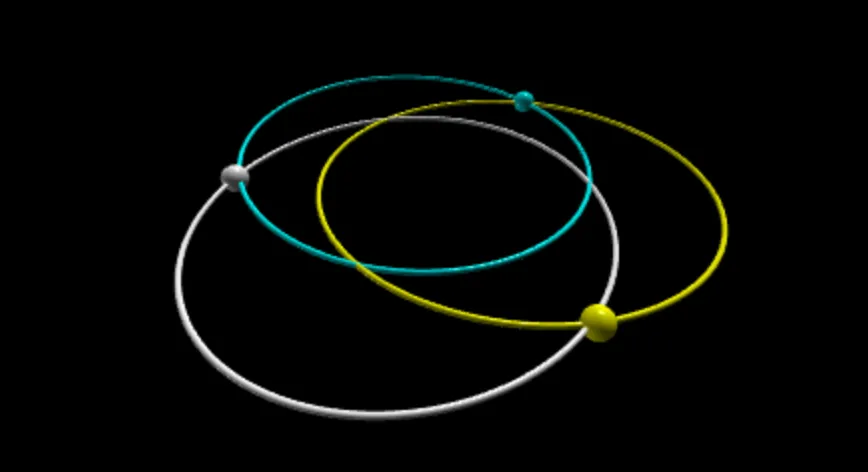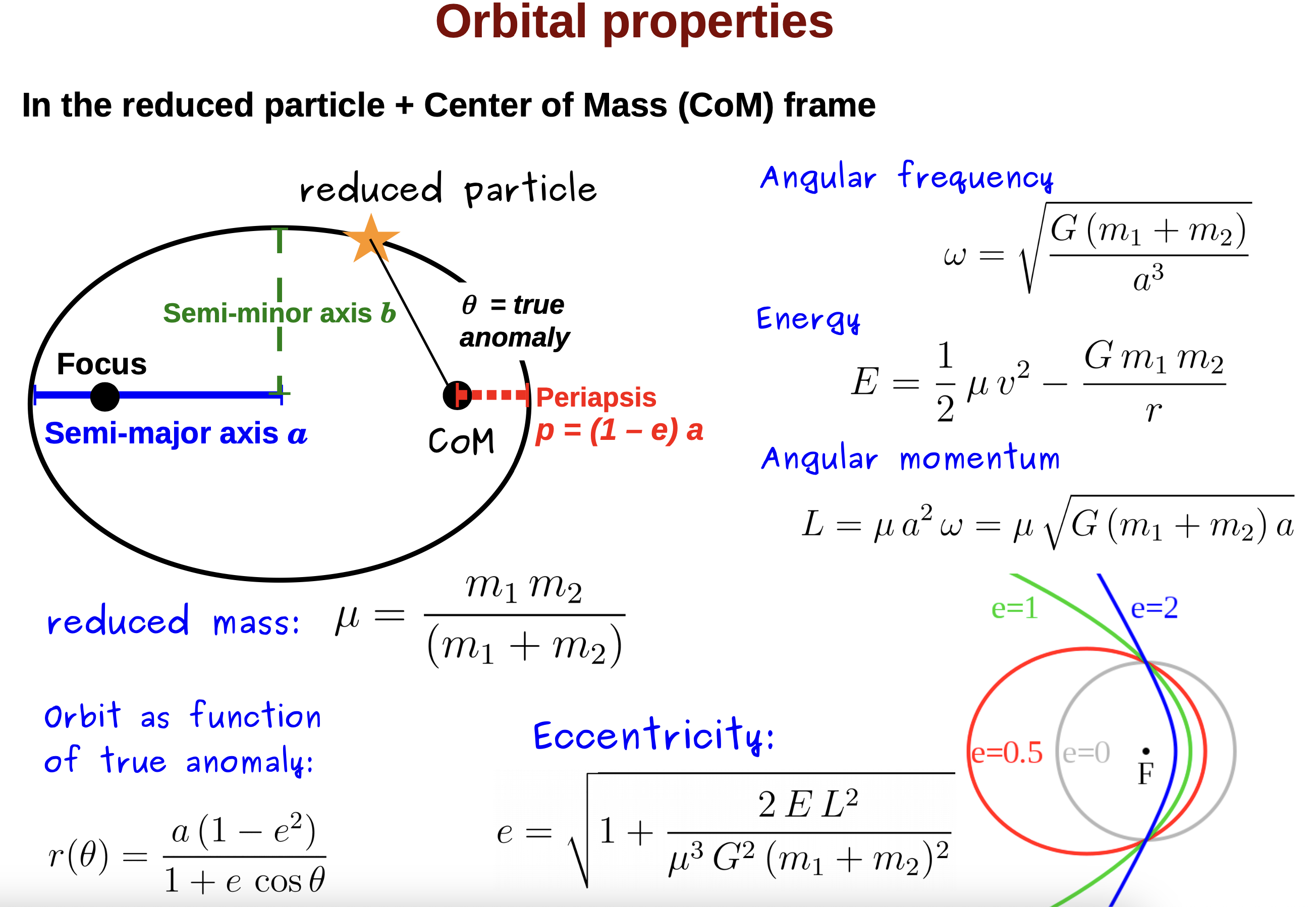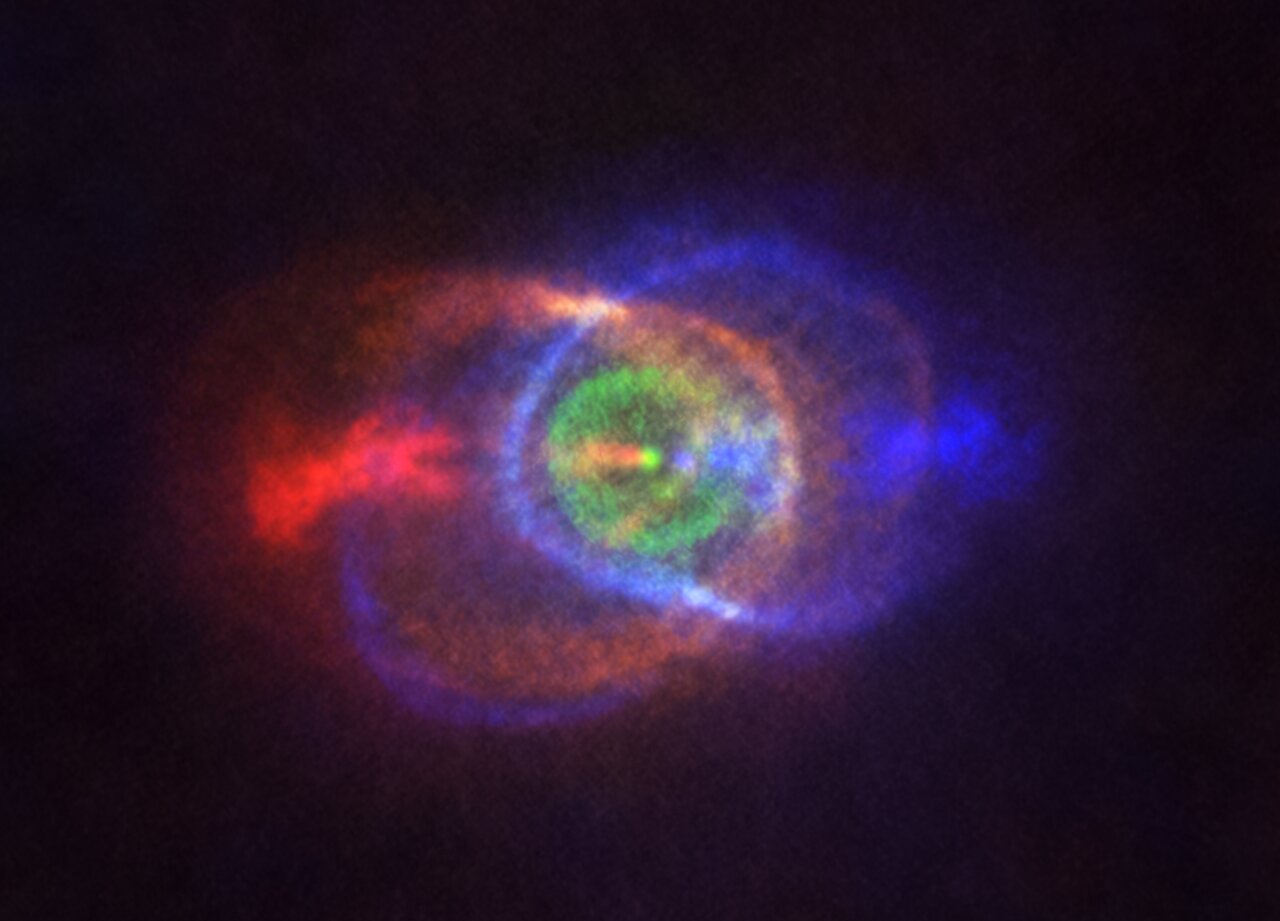
reading time: 5 minutes
The three-body problem, born with the theory of Newtonian gravitation, remains today one of the most complex open questions in stellar dynamics, the branch of astrophysics that studies the effects resulting from the motion of stars and their impact on the surrounding environment. The difficulty in defining a dedicated mathematical treatment that is efficient and inexpensive from a computational point of view has always introduced strong limitations in the analysis of certain phenomena, such as the three-body binary configuration. But, if in the past this was an almost insurmountable obstacle, now a new fighting spirit seems to be spreading in the research world thanks to the publication of a new simulation code based on the advanced direct integration method.
The majority of stars in the universe are part of binary systems: some are born bound together already in the original molecular cloud (i.e. primordial binaries), while others are joined together during their lives by gravitational interaction, especially in dense environments such as stars. Spherical clusters (i.e. dynamic binaries). In this regard, different mechanisms intervene to connect two initially isolated stars: dynamical friction within a gaseous medium, dissipation of orbital energy due to the influence of tidal forces with consequent narrowing of the orbit itself (i.e. tidal trapping). , and the emission of gravitational waves during close passage of two compact bodies (i.e. gravitational capture). Moreover, the generation of binary systems has also been found after the encounter between three interacting bodies that undergo a deviation in their orbits and are thus induced to come into contact with each other: one of these bodies acts as a catalyst by transferring its inherent gravitational energy to the other two, which convert it into energy kinetics of binding, and they are expelled at the end of the process. However, this phenomenon, called three-body binary formation (3BBF), is generally less investigated than that mentioned above. The lack of interest in the 3BBF is due to the historical belief that its production rate of binary systems is globally negligible, i.e., irrelevant to the full dynamical existence of star clusters. That was until it was discovered that they were increased due to the presence of black holes, which are very common in similar stellar contexts. Another reason for the past indifference towards 3BBF is the belief that it tends to lead to “soft” binaries, i.e. destined to be easily destroyed by subsequent disruptive events due to the large distance between components, as opposed to “hard” components. However, despite their poor longevity, soft binaries will form frequently, making the probability that a small fraction of them will survive thanks to the narrowing of the orbit very high.

Therefore, ignoring the contribution of 3BBF to establishing theoretical models about the dynamical role of duality is inadvisable, although it is objectively useful because it limits computational complexity and computational overhead. In fact, simulating a nBodies require very complex algorithms to solve three-body interactions in acceptable times, and vice versa, and Monte Carlo techniques often adopt oversimplifications in order to improve relative performance. However, a new direct integration method appears to be able to overcome these difficulties by revisiting the double work called AH76, which, based on an imprecise Monte Carlo sampling scheme, assumed that 3BBF occurred between three initially unrelated objects. (i.e. three unrelated objects, 3UB) of equal mass and in a non-repeating manner. By using the addon tsunami And a Python package Building balconies, the AH76 model was then modified by correcting inherent Monte Carlo plot inconsistencies and significantly increasing the 3UB scattering number to obtain more robust statistics. The addition of post-Newtonian expansions (i.e. mathematical methods for finding approximate solutions to Einstein's equations of general relativity) allows black holes and related phenomena to be included in the 3BBF discussion as well.

Typical N-body simulation code: thanks to reduction to the central reference
Of mass (CoM), the system is viewed as a single object in dynamics
excellent. Credits: Michela Mapelli.
The first obvious consequence of applying the revised simulation code is that 3BBF favors the coupling of the two interacting objects with the least mass in the case of soft binaries, and the more massive object with the less massive object in the case of solid binaries. It should be noted, then, that the former, which are produced at a much higher rate than the latter, are mostly characterized by wide, eccentric orbits like those observed by the mission. Gaia. This then confirms that although their lifetime is generally short, some soft binaries still exist: thus, omitting them from the description of the dynamical state of the stellar system may lead to a partially incorrect view. Conversely, the inclusion of post-Newtonian effects in the 3BBF stimulates the generation of solid black hole binaries through the emission of gravitational waves that occur during interaction with the third body. Since this formation channel only becomes relevant for nuclear clusters due to their large density, this deviation of 3BBF can be taken into account in a selective manner. However, if 3BBF occurs in globular clusters, with their typical combination of two main sequence stars and a black hole, it has been found that collisions with other nearby stars do not strongly affect the process as long as they result in a strong binary. Finally, the 3BBF mechanism is found to promote high-speed ejection of the catalyst object, which may even be able to escape the host mass and thus become a runaway star within the galactic halo. This appears to be particularly true for main sequence stimulating stars, which typically leave a newborn solid binary system consisting of either an identical star and a black hole or two black holes.

In summary, this detailed study of the 3BBF demonstrates, in accordance with the premises, the importance of considering that phenomena considered less likely do not affect the determination of the physical state of the stellar system. In fact, at the expense of ancient scientific biases, it has been concluded that a part of the soft binaries has not decayed, as it can still be observed using space telescopes, that the appearance of post-Newtonian impacts and collisions depends on environmental characteristics, and that this part of the number of stars is explained Naturally escaping into the Milky Way. However, this is little more than a starting point: there is still much work to be done to explore all aspects of the 3UB problem, which are fundamental to understanding stellar dynamics. Therefore, we await future and more sophisticated applications of this promising new simulation approach to fully immerse ourselves in this fascinating mathematical physics sector of theoretical astrophysics today.
source: arXiv.
Want to always be updated on Sky of the Month?
Subscribe to the newsletter!

“Internet trailblazer. Travelaholic. Passionate social media evangelist. Tv advocate.”








More Stories
If you shave like this, you risk getting sick. Doctors warn: “Don’t take it lightly.”
Why do we see the stars as they were in the past?
James Webb mapped the weather of an exoplanet